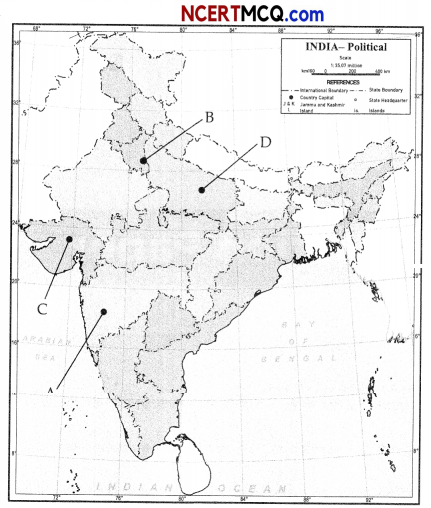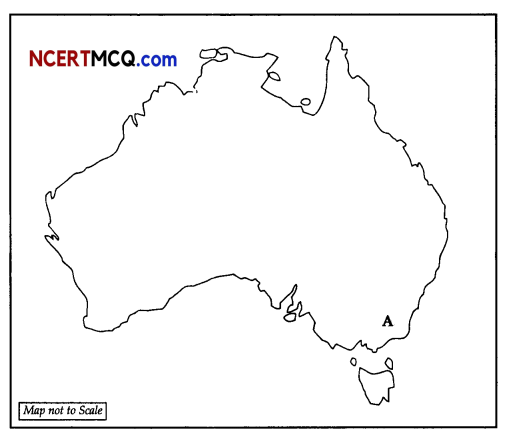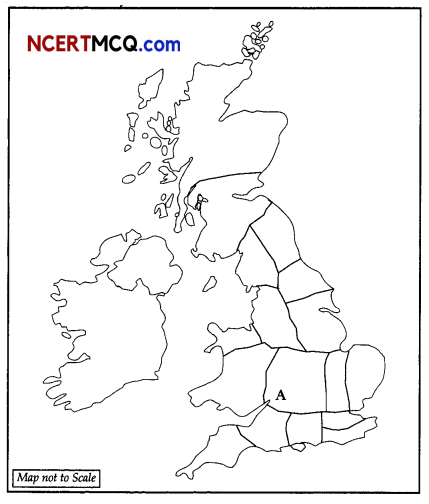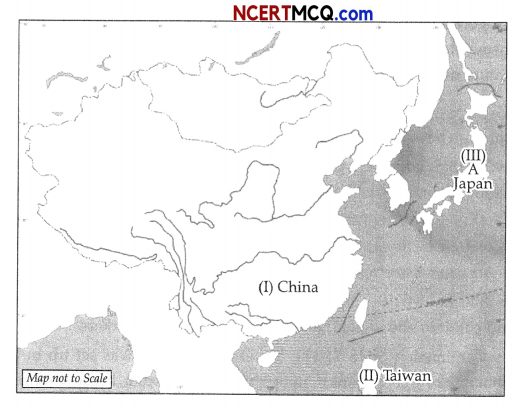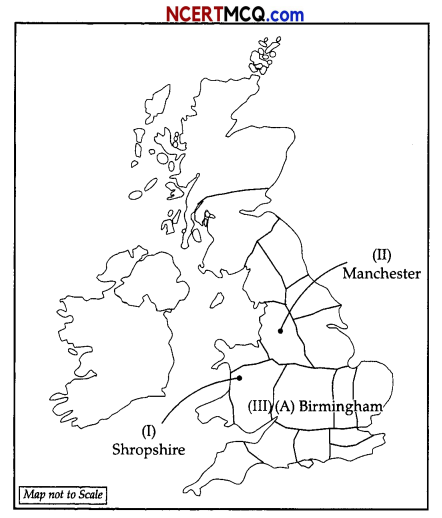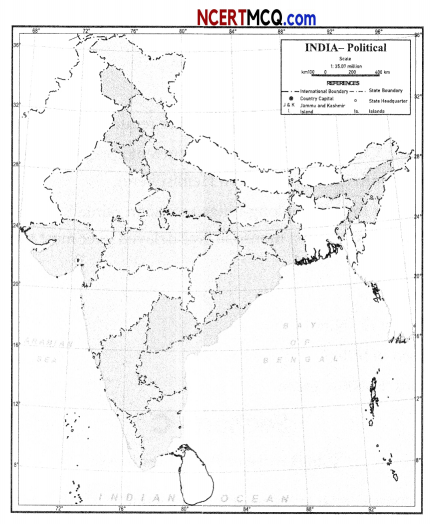Students can access the CBSE Sample Papers for Class 11 Political Science with Solutions and marking scheme Term 2 Set 4 will help students in understanding the difficulty level of the exam.
CBSE Sample Papers for Class 11 Political Science Term 2 Set 4 for Practice
Time: 2 Hours
Maximum Marks: 40
General Instructions:
- The question paper has 3 Sections A, B &C.
- Section A has 8 questions of 2 marks each. Answer to these questions should be completed within 50 words each.
- Section B has 3 questions of 4 marks each. Answer to these questions should be completed within 100 words each.
- Section C has 2 questions of 6 marks each. Answer to these questions should be completed within 170 words each.
Section – A
(2 x 8 = 16)
Question 1.
What is a draft of the proposed law is called? [2]
OR
Who elects the members of the Legislative Assembly? [2]
Question 2.
While appointing the Prime Minister, whom does the President select? [2]
![]()
Question 3.
The person who has been recognized as the greatest leader of South Africa, fought against racial discrimination? [2]
Question 4.
The Constitution of India prohibits discrimination on which grounds? [2]
Question 5.
Mention the five kinds of inequalities which Ram Manohar Lohia identified to fight. [2]
Question 6.
How do liberals uphold the principle of competitiveness in the most efficient and fair way? [2]
Question 7.
What does the struggle for freedom represent? [2]
![]()
Question 8.
What is the role of the State in upholding freedom of its citizens? [2]
Section – B
(4 x 3 = 12)
Question 9.
State four advantages of unicameral legislature. [3]
Question 10.
The Presidential form of the government is the best for India. Why or why not? [3]
Question 11.
Map Based Question
In the given outline political map of India, four states have been marked as (A), (B), (C) and (D). Identify these states on the basis of the information given below and write their correct names in your answer book along with their respective serial number of the information used and the concerned alphabets as per format that follows: [3]
(i) Lai Bahadur Shastri belong to this state.
(ii) The Supreme Courts of India is located in this city.
(iii) Zail Singh belonged to this state.
(iv) The state to which the former Prime Minister Morarji Desai was related.
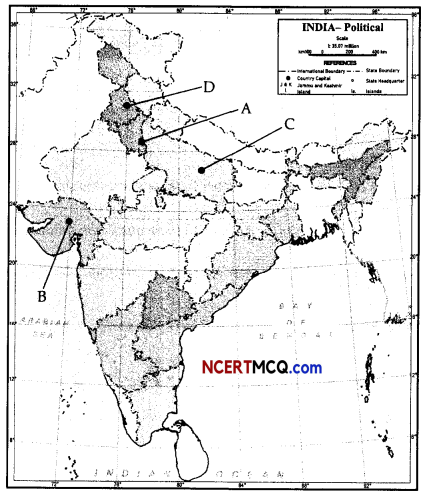
Section – C
(6 x 2 = 12)
Question 12.
State the composition of Supreme Court and High Court. [6]
OR
Why is judiciary important in a democratic country? [6]
![]()
Question 13.
Briefly discuss the three principles of justice outlined in the chapter. Explain each with examples. [6]
OR
Does the principle of considering the special needs of people conflict with the principle of equal treatment for all? [6]

